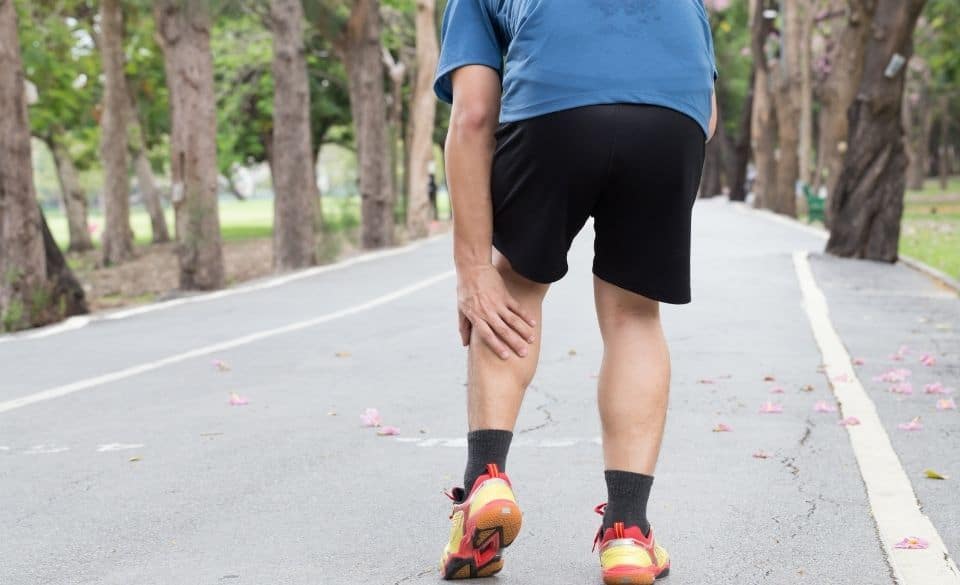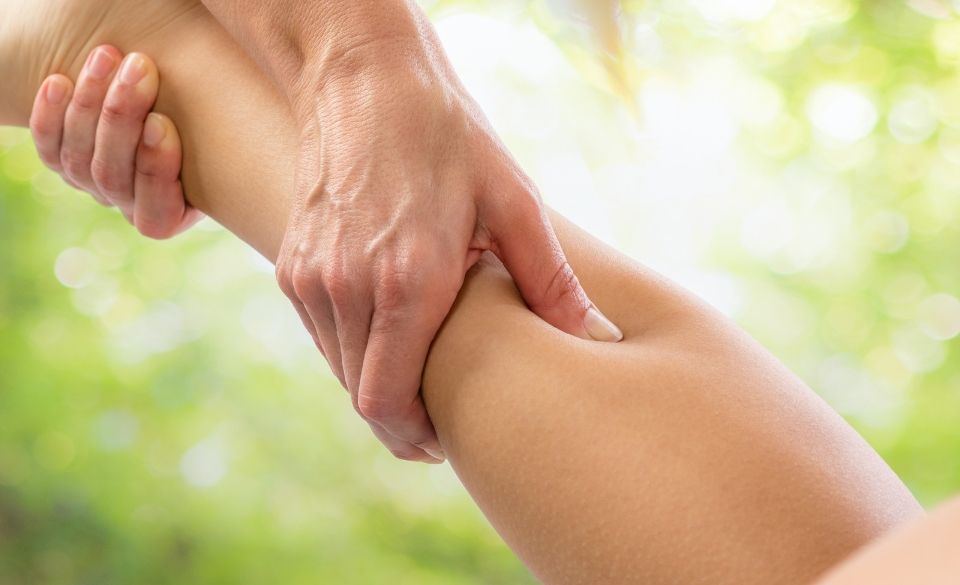
Should I Run With Calf Pain? We Answer All The Questions
Page Contents
As a runner, we are used to dealing with constant niggles, this could be tightness in the hamstring, soreness in the quadriceps, or even calf pain.
However, there are times when we can run through it without any adverse effects, while other times we need to rest. Either way, it is important to know when to stop running if you feel pain or discomfort.
This article focuses on calf pain and provides some tips to help you know if you should run with calf pain or not. We also discuss:
– What causes calf pain during and after running
– Should you run with calf pain?
– Should you run with tight calves?
So, Let’s get started.
What Causes Calf Pain During & After Running?
If you have experienced an injury in the calf region, calf pain after this is expected. But what happens if you have no history of a calf injury, and feel pain both during and after running?
First, you must identify the cause.
Many things can cause calf pain during and after running. However, the most common causes include:
Overloading the calf muscle
You may have introduced hill or speed work into your training program that you haven’t done before. This can often cause more stress on the calf muscle and overwork it. Then without proper rest, it can overload the calf muscle and cause pain.
Generally, hill repeats, lots of hill running, speed work, and an increase in mileage are usually to blame.
Other causes of overloading include strength training. If you have recently hit the gym and started to do calf raises and exercises that place stress on the calf, can cause soreness and sometimes pain in and around the calf muscle.
Running Technique
Sometimes runners feel the need to change their running technique. This may mean moving from heel striking to forefoot running or moving to a minimalist shoe. Both can add extra strain on the calf muscles during the first few weeks. Making these adjustments too quickly can cause pain and soreness in the calf muscle.
Tight Calf Muscles
Probably the most common cause of pain is running constantly with tight calf muscles. If you don’t stretch or foam roll regularly, tight calves can turn into a painful experience. Tight calf muscles are usually caused by an increase in mileage or intensity. Alternatively, it can also be caused by atrophy, which is when there is progressive degeneration or shrinkage of muscle or nerve tissue in the calf muscle. this is usually caused by inactivity and is more common after the off-season.
Achilles Tendinitis
If you are experiencing Achilles tendinitis, it will generally cause some discomfort in the calf muscle. This is usually felt during the morning and evening.
Muscle Strain
Last but not least are muscle strains. If you have strained your calf muscle, you will experience pain when running and resting.
As you can see there are many causes of calf pain, both during and after running. But should you run with calf pain? Keep reading to learn more.

Should I Run With Calf Pain?
If you have experienced one or more of the causes above, there will be a period where your calf muscle is stiff and painful. During this time, it is important to avoid running. This will give the calf muscle time to repair itself. Instead, think about jumping on the bike, doing some swimming, or doing another activity that doesn’t cause pain in the calf while it recovers.
If all you are experiencing is tight calf muscles, it is important to rest for a few days and try to loosen up the muscles. This can be done through self-massage, a visit to the masseuse, or some foam rolling. Once you find the calf muscle feels supple and relaxed, you should be able to start some light running again. However, it is important to build up the volume slowly, to prevent the tightness from returning.
If you have recently changed your shoes or your running style, you may have overloaded the calf muscle. If this is the case, rest your calves for a few days until the pain has resided, and then start back building up extremely slowly. This will allow the calf muscles to adapt to the foot strike or new shoes.
Alternatively, if the calf pain comes from an increase in volume, speed work, or hill running, give the calf muscles a few days rest and go back to some easy running. Once the pain and tightness have subsided, introduce speed work or hill repeats slowly over a few weeks. If an increase in volume was the cause, dial back your weekly mileage and once the calf feels healthy again, increase the mileage by less than 5% every week. This will prevent overloading from happening again.
Unfortunately, if you have strained the calf, recovery will be much longer. You will most likely need a few weeks to a month to fully recover. During this time you should stay away from running until your physiotherapist has given you the all-clear to start running again.
The key to recovery is rest. However, other forms of exercise can be done during the recovery period, as long as it doesn’t aggravate your calf.
Should I Run With Tight Calves?
Should you run with tight calves? A short answer is no. Tight calves can cause more serious issues in the long run. Instead, try to stay away from running for a few days and try to loosen up the muscle. This can be done through massage, acupuncture, foam rolling, and stretching.
By doing this, you can help loosen up the muscles and prevent any more serious injuries from forming. If you continue to run on tight calves, you may find you could tear or strain the calf muscle.
Once the muscle is supple and the tightness has gone, it is recommended to start back running slowly for a few weeks. This will prevent any ongoing issues.

How Do I Stop My Calves From Hurting When I Run?
The easiest way to stop your calves from hurting when you run is by having a few days rest and spending some time stretching, massaging, and icing the muscle. Once the muscle has stopped hurting you can start thinking about strengthening the calf to address any weakness you may have. If you try to strengthen the calf muscle when you still have pain can often cause an already fatigued calf to become worse and more painful.
Once your calf muscle has fully recovered from whatever injury or tightness you have experienced, you should continue with regular foam rolling or massage. This will prevent symptoms of tight calves from happening again.
Using compression socks during and after running may also help keep blood flowing regularly to the calf muscle, which can also hep to reduce the chances of pain when running.



